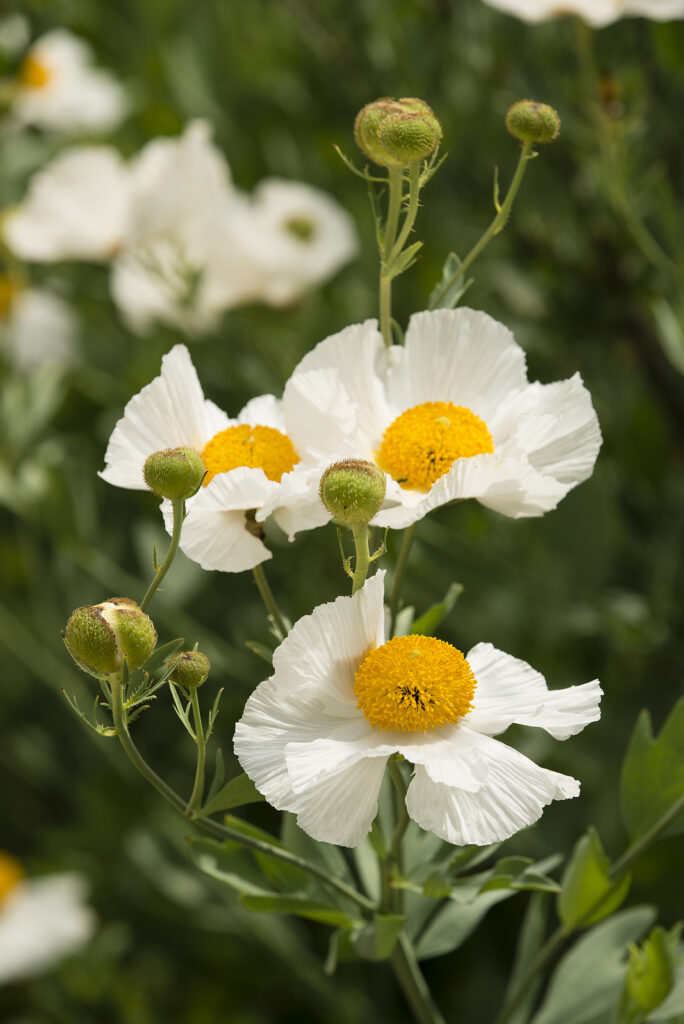Romneya–commonly called Matilija poppy–is a large perennial shrub with many basal stems and large, white, crepe-like petaled flowers that can reach 9 inches across. Romneya grows 5 to 8 feet tall; both the stems and foliage are bluish gray-green.
Romneya is among the most widely planted western American native plants. The tall stems and striking white flowers are grown in borders, as hedges, and as accent specimens. It grows well in sunny places on rocky soils and once established can withstand long periods of drought.
Romney flowers from spring into summer. By late summer, most parts of the pat die back under drought stress.
Romneya is a genus of two perennial species native to southern California and northern Baja California.
Get to know Romneya
- Plant type: Woody, subshrubby perennial
- Growing zones and range: Zones 8-11
- Hardiness: Hardy to Zone 8, protect from strong, cold winds
- Height and width: 3 to 8 feet (1-2.5m) tall and twice or three times as wide
- Foliage: Alternate and pinnatified glaucous gray-green leaves to 5 inches long
- Flowers: Fragrant, showy white flowers are solitary, shallowly cup-shaped with prominent yellow stamens, 5 to 9 inches across
- Bloom time: Summer
- Uses: Border, accent plant
- Common name: Matilija poppy, tree poppy
- Botanical name: Romneya
- Family name: Papaveraceae
- Origin: Southern California and North Mexico

Where to plant Romneya
- Plant Romneya in full sun, sheltered from strong, cold winds.
- Romneya grows best in humus-rich, well-drained soil, but will grow in most soils.
When to plant Romneya
- Set container-grown Romneya outdoors in spring or in autumn in mild-winter regions.
Planting and spacing Romneya
- Space Romneya 8 feet apart.
How to water and feed Romneya
- Water Romneya to keep the soil just moist. Once established, Romney can withstand long droughts.
- Fertilize Romneya with an all-purpose, slow-release fertilizer in spring.
Romneya care
- Protect Ronneya with a deep winter mulch.
- Romneya will spread by suckers; cut back Romneya to the base in winter.
Romneya pests and diseases
- Caterpillars can be a problem for Romneya
- Romneya can be afflicted by Verticillium wilt.
Romneya propagation
- Sow Romneya seeds in spring.
- Root basal cuttings in spring; insert root cuttings in winter.
Romneya varieties to grow
- Romneya coulteri. Upright, deciduous, subshrub; grows 3 to 8 feet tall and as wide or more; solitary, shallowly cup-shaped white flowers to 5 inches across with prominent yellow stamens; glaucous, gray-green to leaves to 5 inches across.















